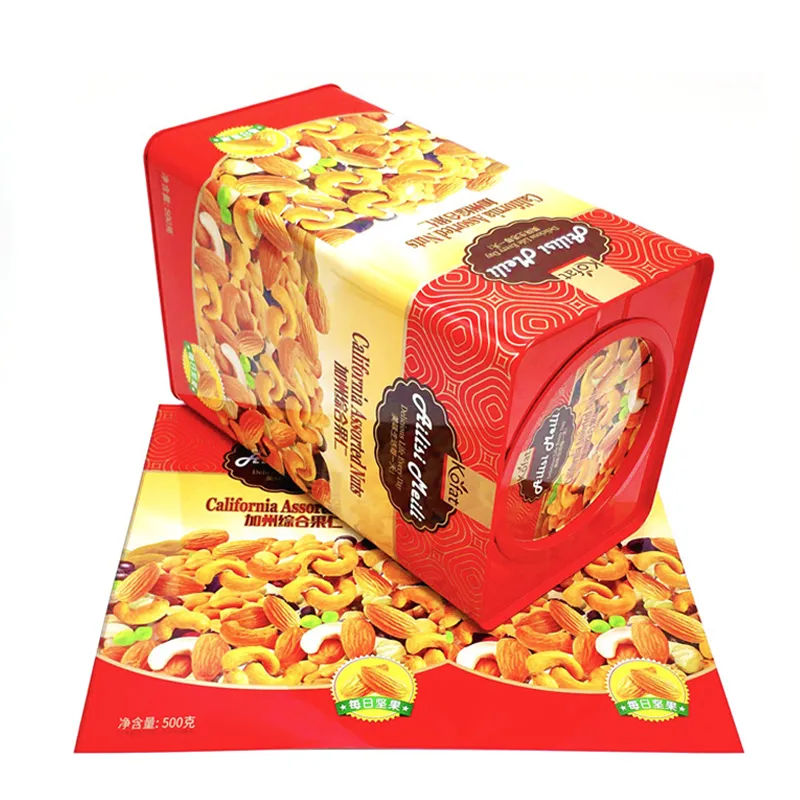Tinplate sheet is a metal widely used as packaging material in the food, beverage, cosmetics, and pharmaceutical industries. Due to its excellent properties such as corrosion resistance, strength, and plasticity, tin plate sheet has become an ideal choice for various cans, bottle caps, containers, and other products. In practical applications, printing is one of the important links in the processing of tin plate sheets. Through the exquisite design of patterns and texts, packaging materials can better convey product information and enhance market competitiveness.
However, before printing tin plate sheets, is it necessary to electrolyze their surfaces? This is a common topic of discussion among many producers and technicians. Electrolysis, as a surface treatment technology, is usually used to enhance the adhesion of metal materials or improve their surface conditions. This article will explore the importance of electrolytic treatment before tinplate sheet printing, analyze its working principle and specific process, and combine the characteristics of tinplate sheet to explain whether electrolysis is needed before printing.

What is the principle of electrolytic treatment?
Before discussing whether electrolytic treatment is necessary, it is necessary to first understand the basic principles of electrolytic treatment. Electrolytic treatment is a technology that changes the surface properties of metals by applying an electric current to the electrolyte, causing cations or anions in the electrolyte solution to move to the metal surface and react chemically. This process is often used for metal anti-corrosion treatment, enhancing the adhesion of metal surfaces, or providing a uniform and clean substrate for the adhesion of subsequent coatings and inks.
Do I need to electrolyze tinplate sheets before printing?
In the processing of tin plate sheets, electrolytic treatment is usually used to remove surface impurities or form special coatings to improve its corrosion resistance and adhesion with inks or coatings. Especially in scenarios where high-quality printing is required, surface cleanliness and smoothness have a direct impact on the adhesion of inks. Therefore, in some cases, electrolytic treatment becomes an important pre-treatment step to ensure printing quality.
What are the characteristics of tinplate sheets?
The production process of tin plate sheets involves plating a layer of tin on the basis of cold-rolled steel sheets to form a tin-plated layer with anti-corrosion effect. The key feature of this material is that the tin-plated layer on its surface can effectively prevent oxidation and has a certain chemical stability, and can show good durability in humid and acidic environments. Tinplate sheet has a smooth surface, and its thickness and hardness can be adjusted according to different needs through processing, so it has become one of the preferred materials in the packaging industry.
However, the smooth surface of tinplate sheet also poses a challenge for printing. Ink is often difficult to adhere well to smooth metal surfaces, and it is easy to fall off, smudge or uneven printing after printing. Therefore, before printing, tinplate sheet usually needs to undergo a certain pretreatment process to improve its surface adhesion performance.
What is the role of electrolytic treatment in tinplate sheet printing?
The role of electrolytic treatment in tinplate sheet printing:
1. Remove surface impurities
2. Enhance ink adhesion
3. Promote uniform distribution of coating
Remove surface impurities
During the production and storage of tin plate sheet, its surface may absorb grease, oxides or other contaminants. These impurities not only affect the adhesion of printing inks, but also may cause unevenness or color distortion of printed patterns. Electrolytic treatment can effectively remove these surface contaminants through electrochemical reactions, ensuring the clean surface of tin plate sheet and providing an ideal substrate for subsequent printing processes.
Usually, the surface of tin plate sheet will undergo one or more chemical cleanings to remove surface oil and oxides, but sometimes this cleaning cannot completely remove tiny contamination particles. Electrolytic treatment can treat the surface more deeply to ensure the cleanliness and smoothness of the metal.
Enhance ink adhesion
Another important role of electrolytic treatment is to enhance the bonding between the ink and the surface of tinplate sheet by changing the microstructure of the metal surface. The surface of untreated tinplate sheet is very smooth, which is beneficial to its anti-corrosion and processing properties, but not conducive to the adhesion of printing ink. Through electrolytic treatment, the surface microstructure will change slightly, forming more subtle grooves, which can improve the adhesion of ink on the surface and ensure the firmness and durability of printing.
Promote uniform distribution of coating
In some high-end printing processes, the surface of tinplate sheet needs not only to print patterns, but also to be coated with a layer of transparent or colored protective paint. Electrolytic treatment can effectively improve the uniform distribution of coating on the metal surface, avoid the phenomenon of excessive thickness or thinness in local areas, and ensure that the surface of the entire printed product is smooth and has a consistent texture. This treatment method is particularly suitable for multiple coating and printing superposition processes, which can significantly improve the visual effect and feel of the final product.

What are other surface treatment methods for tinplate sheet?
Although electrolytic treatment can effectively improve the printing quality of tin plate sheet, not every printing process requires electrolytic treatment. In fact, there are many ways to treat the surface of tinplate sheet. According to different application requirements, different treatment methods can be selected to achieve the ideal printing effect.
3 common tin plate sheet surface treatment methods:
1. Chemical cleaning
2. Surface coating treatment
3. Mechanical grinding
Chemical cleaning
Chemical cleaning is the most basic part of tinplate sheet surface treatment. It usually uses weak acid, weak alkali or organic solvent to remove grease, oxides and other impurities from the metal surface. Chemical cleaning is low in cost and simple to operate, so it is widely used in the pre-treatment process of tinplate sheet. However, the effect of chemical cleaning depends on the type of cleaning agent used and the cleaning time, and improper treatment may lead to unsatisfactory cleaning effect.
Surface coating treatment
Surface coating is a process of applying a layer of special coating on the surface of tin plate sheet to improve its corrosion resistance and printing performance. Common coating materials include epoxy resin, acrylic resin, etc. Surface coating can not only provide additional protection for tin plate sheet, but also improve the adhesion of ink and ensure the stability of printing.
Coating treatment is usually used in conjunction with electrolytic treatment to ensure that the coating can be firmly attached to the metal surface and evenly distributed. The surface of the tinplate sheet after coating treatment is smoother and has stronger anti-corrosion performance.
Mechanical grinding
In some special cases, the surface of the tin plate sheet may need to be mechanically polished to improve its microstructure. The purpose of grinding is to increase the adhesion of ink by slight surface roughening. Unlike electrolytic treatment, mechanical grinding is to change the metal surface morphology by physical means to improve the adhesion of printing ink. However, mechanical grinding may damage the surface coating of tin plate sheet, so in practical applications, the grinding process is usually used for high-end printing with special needs.

What are the limitations of electrolytic treatment?
Although electrolytic treatment has many advantages in improving the printing quality of tin plate sheet, its application also has certain limitations.
High cost
Electrolytic treatment requires the use of special electrolytic equipment and electrolyte, and requires precise control of current, time and solution concentration. This makes the cost of electrolytic treatment higher than other surface treatment methods, especially in large-scale production, where the equipment investment and operating costs of electrolytic treatment will increase the overall expenditure of the production line.
Applicability issues
Electrolytic treatment is not suitable for all types of tinplate sheet printing. Some simple printing processes or products with low printing quality requirements may not require electrolytic treatment. For these products, chemical cleaning or coating treatment can already meet their printing needs, so electrolytic treatment will increase unnecessary costs.
High equipment maintenance requirements
The operation and maintenance requirements of electrolytic treatment equipment are high, and the operator needs to have a certain technical level, and the equipment needs to be maintained regularly during use. Improper operation may result in poor electrolysis results or even damage to the tin plate sheet surface. Therefore, the implementation of electrolytic treatment requires the support of a professional technical team.

